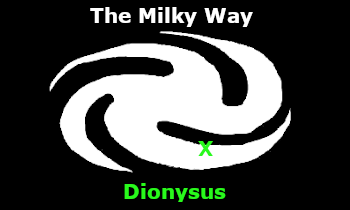Berwynne's Reach is a binary star-system in the middle of the Sagittarius Gap, far from any other stars or inhabited planets. Millions of years ago, an asymmetrical supernova near the current location of Paradise tore a rift in space-time (later to be known as Berwynne's Rift) that leads almost directly to the Berwynne's Reach system.
History
First reached by Ichigo Berwynne in GSC 160, Berwynne's Reach was a promising locale as a jumping-off point for journeys to the Sagittarius Arm, and the Centaurus Arm from the original human core-worlds. In GSC 168, the city of Berwynne's Gate was founded as the capitol of the new Planetary League colony on the surface of Kempe (named for Margery Kempe), the lone terrestrial world in the system. Kempe was also the home of a large and well known temple of Eris. Later the system capitol was moved to Dunningston. The System also contained significant asteroid belts, and several other planets.
Berwynne's Reach quickly became a major hub for trade, and for colonists leaving for the frontier. As the Sagittarius and Centaurus arms developed through the third and fourth centuries of Era-1, Berwynne's reach prospered. A few dozen star-gates were built leading to major systems, and a large number of space-habitats sprung up.
During the Great Reckoning, most of the star-gates were destroyed by the defenders of the Reach in order to prevent the Holy Empire of Man from attacking the system, which had become a major evacuation point for the old-core systems. This left only Berwynne's Rift as a feasible route of attack, and this was constantly guarded by the remnants of the Planetary League fleet that had sought refuge there.
Over time, the memory of the war faded, and Berwynne's Reach became a major center of commerce during Era-2. The remnants of the Planetary League, and various rebel elements used it as a center of organization, although officially the system's government was politically neutral. Berwynne's Reach became a haven for pirates, bounty hunters, rebels, heretics, and other assorted riff-raff. The Yatagarasu (aka the Star Crows) had a substantial presence within the system, and often used it as a base of operations. Berwynne's Reach remained independent throughout Era-2, although the HEM often laid siege to it, and actually succeeded in briefly occupying the system during the War of the Empires.
Businesses
Mr. WOW!, inc., maker of Mr. WOW! soft-drinks was headquartered on a large space station orbiting Kempe.
Points of Interest
Berwynne's Gate is an arcology on Kempe, and was briefly the capitol of the system.











